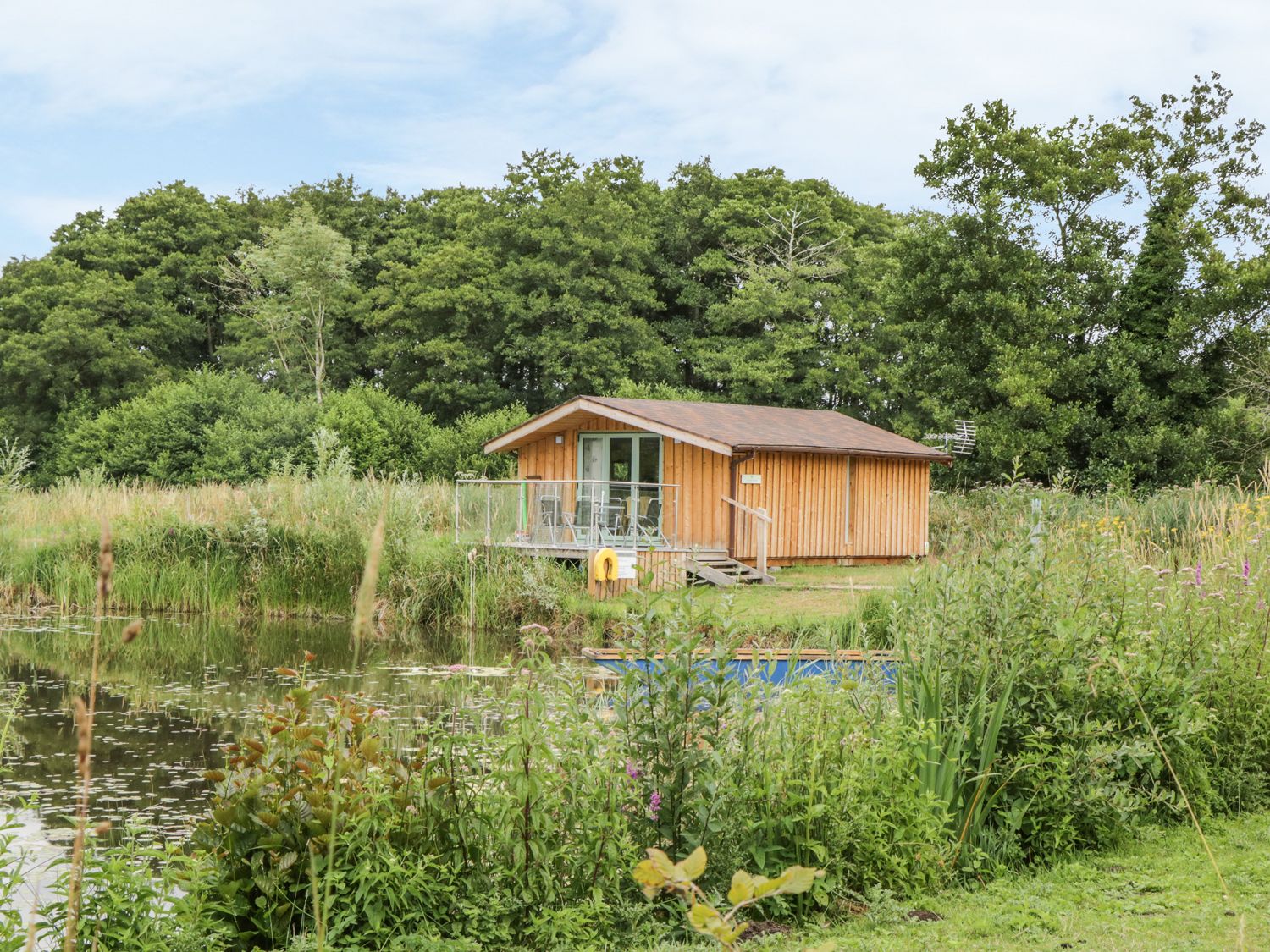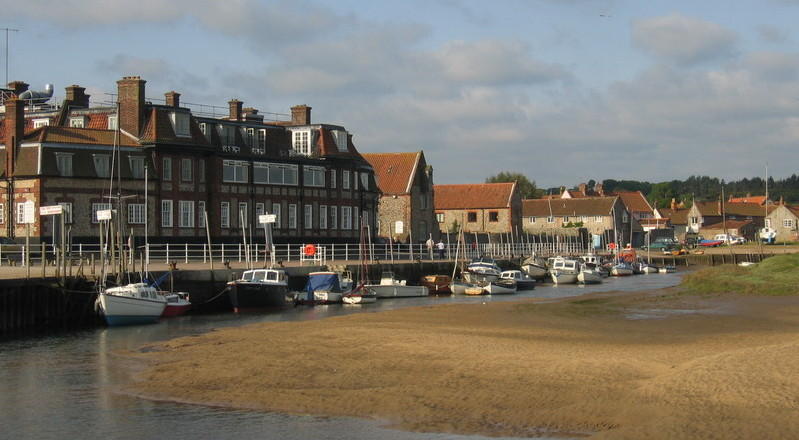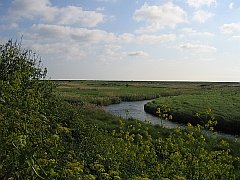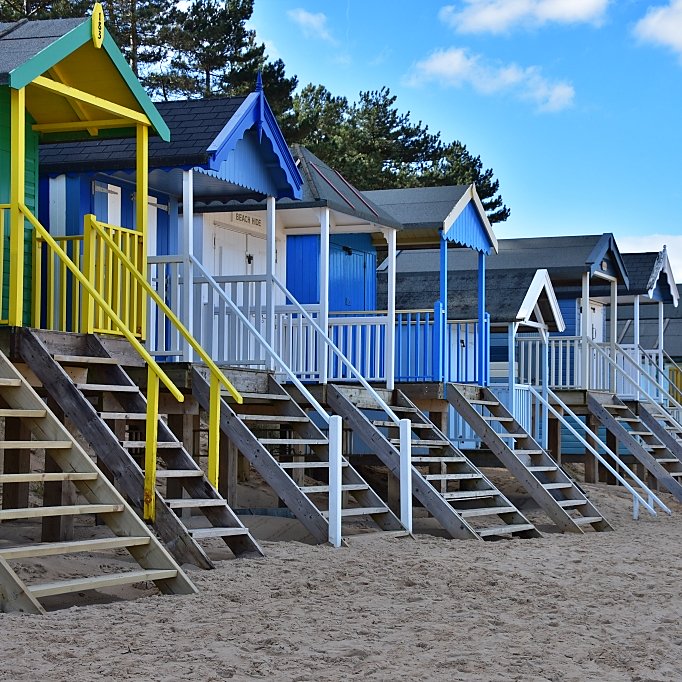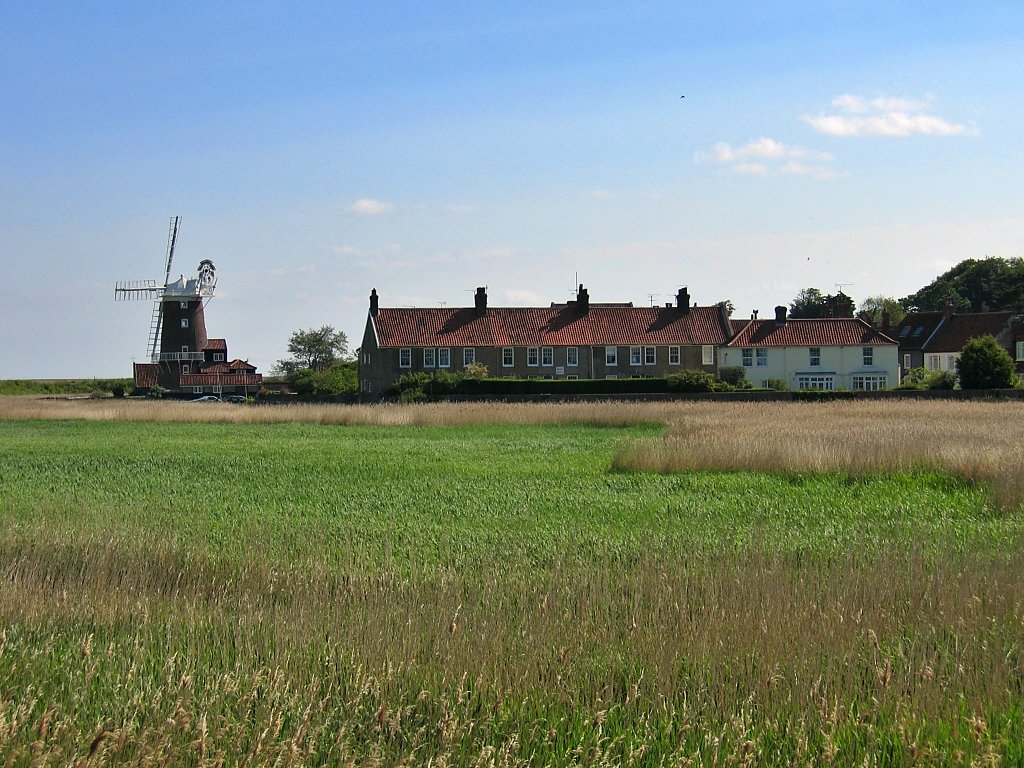The North Norfolk Railway
The Poppy Line
Our holidays to Norfolk were generally based around riding our tandem, with some walking and visiting historic sites thrown in. These activities are much more enjoyable when the sun is out, and it is dry. So, when the weather was against us one day, we took in another passion of mine, steam trains, and went for a ride on the North Norfolk Railway, or as it is also charmingly known “The Poppy Line”.
The North Norfolk Railway is an award-winning heritage railway that runs through scenic countryside between the Georgian town of Holt and the seaside town of Sheringham on the North Norfolk coast. The line is about five and a half miles long and most journeys take around twenty to twenty-five minutes. Along the route, there is a request stop in Kelling and a regular stop at beautiful Weybourne Station, where trains travelling in opposite directions usually meet.
My fondness for trains developed from when my grandad used to take me up to Clapham Junction Station to watch their coming and goings. Much of the rail network had turned to diesel power, but on the very odd occasion a steam locomotive would pass through. I loved the atmosphere and smell as these wonderful steaming machines hauled their wagons and coaches past us staring from the platform. It made my day seeing these great beasts in action, but each time we went the chances of one coming through got smaller and smaller. Although I still loved watching and travelling on trains, I was addicted to the magnificence of the steam train, and we moved on to visiting heritage railways.
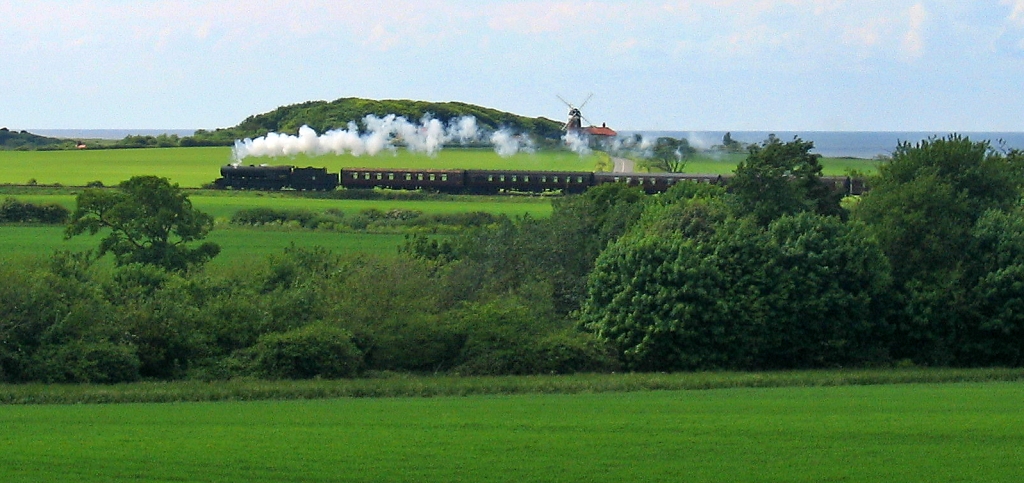 Steam Train Passing Weyboune Windmill on the North Norfolk Railway © essentially-england.com
Steam Train Passing Weyboune Windmill on the North Norfolk Railway © essentially-england.comA Brief History of the North Norfolk Railway
The route of the North Norfolk Railway is a small section of the old Melton Constable to Cromer branch line run by the Midland and Great Northern Joint Railway (M&GN) in the late nineteenth century. Melton Constable is about five miles southwest of Holt and was the hub of Norfolk rail travel as railway lines from Cromer, North Walsham, King’s Lynn, and Norwich met there. The M&NG built railway workshops and maintenance sheds and constructed housing, a school, recreation areas and supporting facilities for their workforce and families.
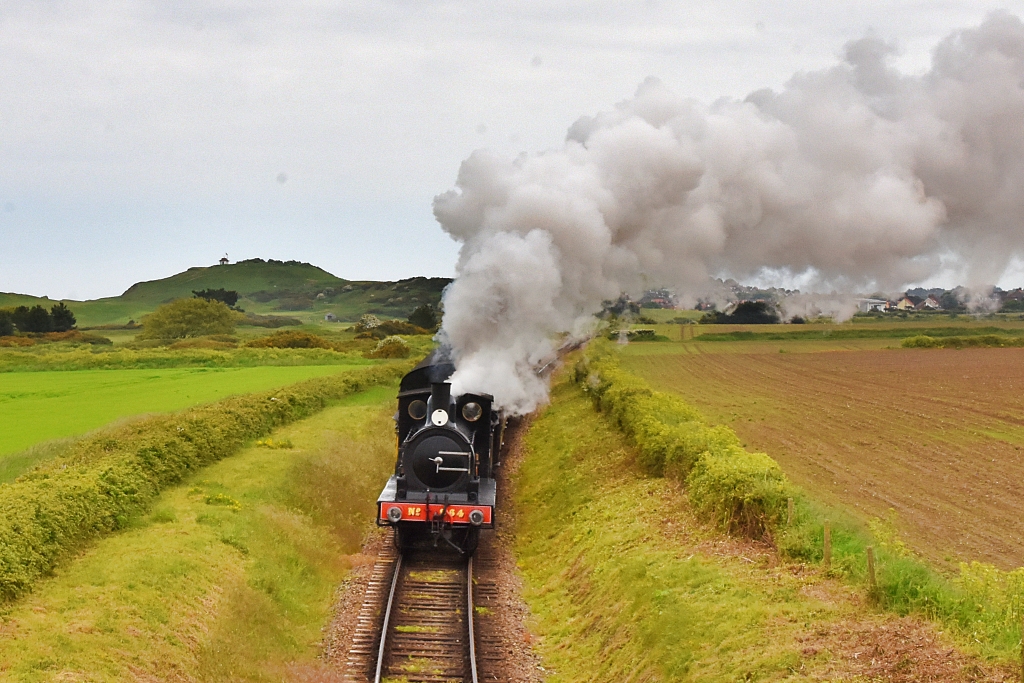 GER Y14 – 564 Heading Towards Weybourne from Sheringham © essentially-england.com
GER Y14 – 564 Heading Towards Weybourne from Sheringham © essentially-england.comWilliam Marriott built the railway line in 1887 and ran it until 1924 when it became jointly controlled by London Midland and Scottish (LMS) and London and North Eastern Railway (LNER) companies. The LNER took full possession of the line in 1936 and held it until the railways were nationalised in 1948 when it became part of British Railways (BR) Eastern Region. Due to cost-cutting exercises, much of the M&NG railway network closed to passengers in 1959, but the Melton Constable to Cromer line continued until the Beeching cuts in 1964.
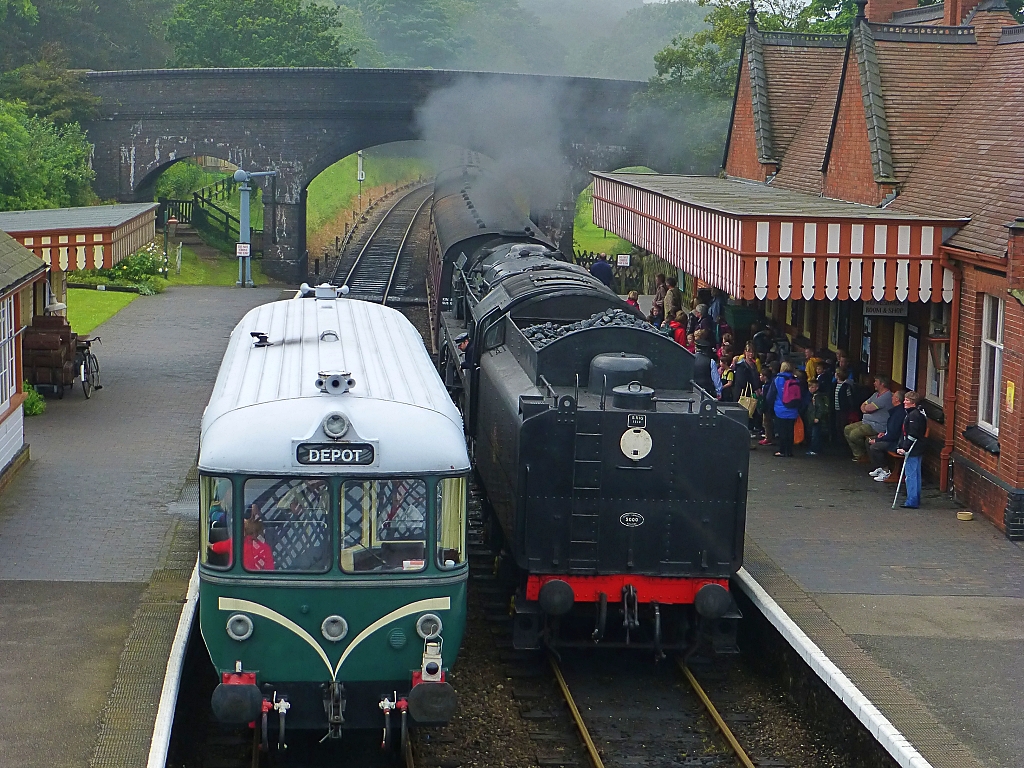 The Railbus E79960 and Black Prince at Weybourne Station © essentially-england.com
The Railbus E79960 and Black Prince at Weybourne Station © essentially-england.comPreservation of the line began in 1968 and the North Norfolk Railway opened to the public in 1975. The first passenger trains ran between Weybourne and Sheringham. In 1983, the line was extended to Kelling Heath, and to Holt in 1989. A level crossing was rebuilt in Sheringham in 2010 to connect the North Norfolk Railway and the national network, and on the 11th of March the Oliver Cromwell hauled the first passenger train over the crossing on its journey from London to Holt.
As for the Poppy Line tag... that comes from a term penned by nineteenth century poet and theatre critic Clement Scott, who called the delightful natural area surrounding Sheringham “Poppyland”, due to the profusion of poppies that grew there.
Our Journey
on the North Norfolk Railway
We started our trip from Holt station as this was the closest to us and would allow us to spend time exploring Sheringham and its coast if the weather improved. Holt Station is about one mile from the town centre and is a recreation of a typical Midlands and Great Northern (M&GN) country railway station using original buildings recovered from other parts of the M&GN network. The original Holt Station was closer to the town centre and was demolished to make way for the A148 town bypass to be built.
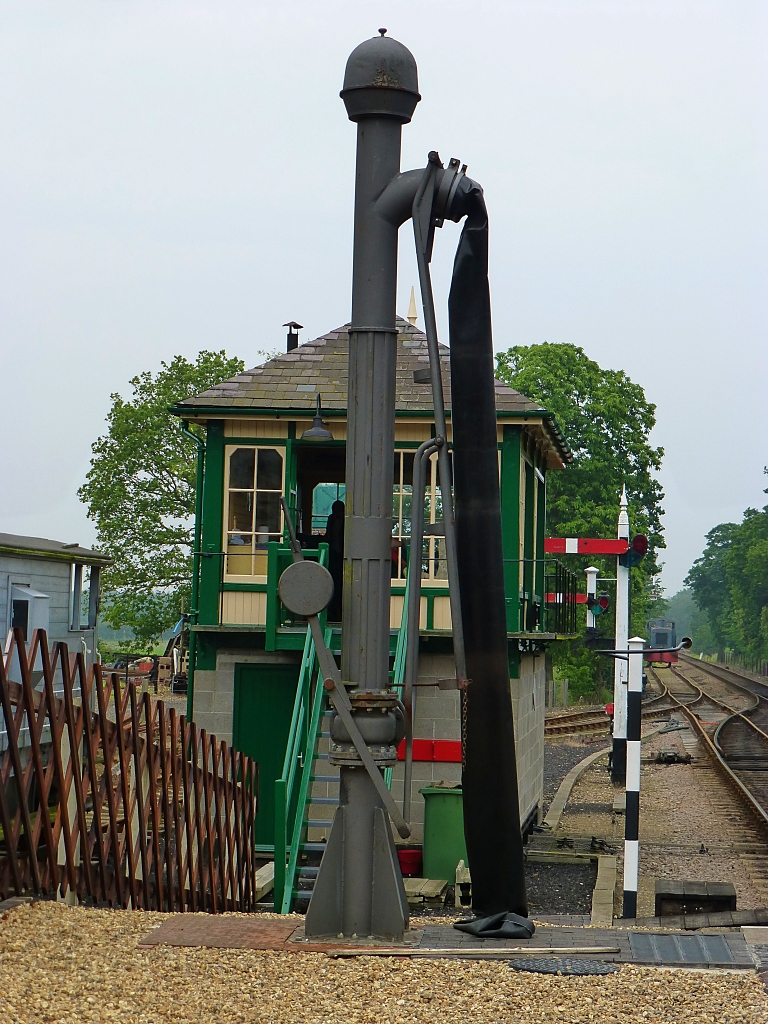 Holt Station Signal Box and Water Tower
Holt Station Signal Box and Water Tower © essentially-england.com
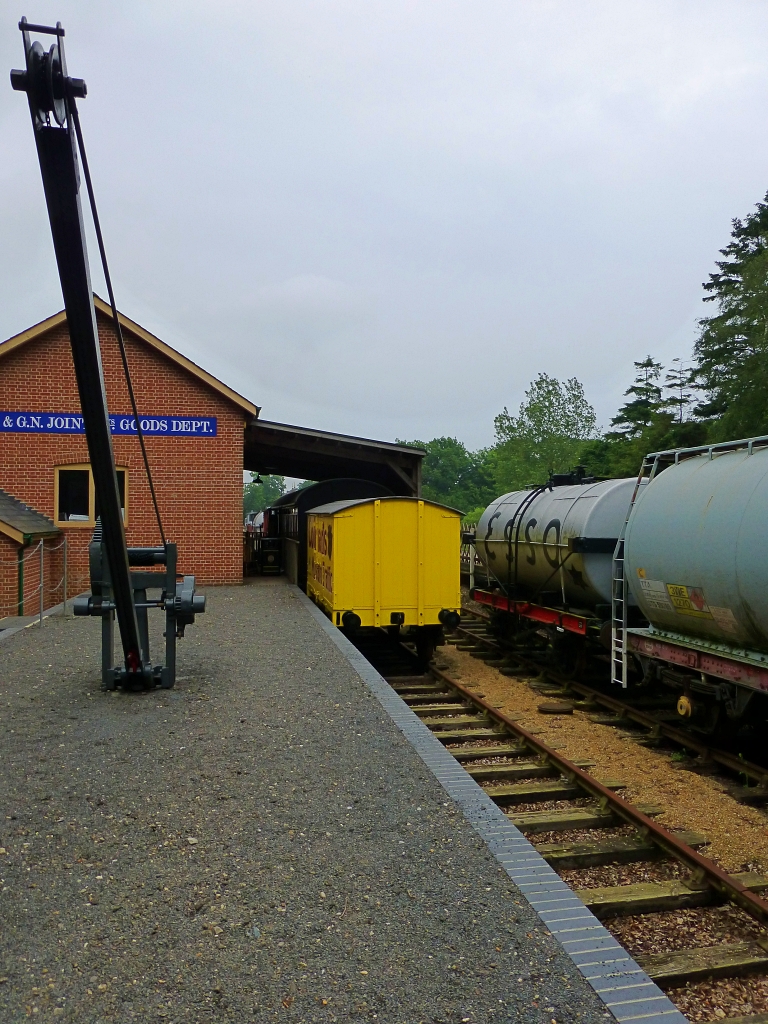 The William Mariot Museum and Loading Bay
The William Mariot Museum and Loading Bay © essentially-england.com
There was plenty to keep most railway enthusiasts happy and dry at Holt Station while they waited for their train’s departure. In a replica M&GN goods shed we found the William Marriot Museum which told the story of the company and its railways. In the loading bay beside the goods shed there were beautifully restored trucks and vans to inspect, whilst along the platforms there were many period features to admire. At the end of the platform is Railway Cottage, which is a copy of the type of small homes that were made from old railway carriages after the First World War. Somewhere there was even a model railway, but we missed that. Better to miss that than our train!
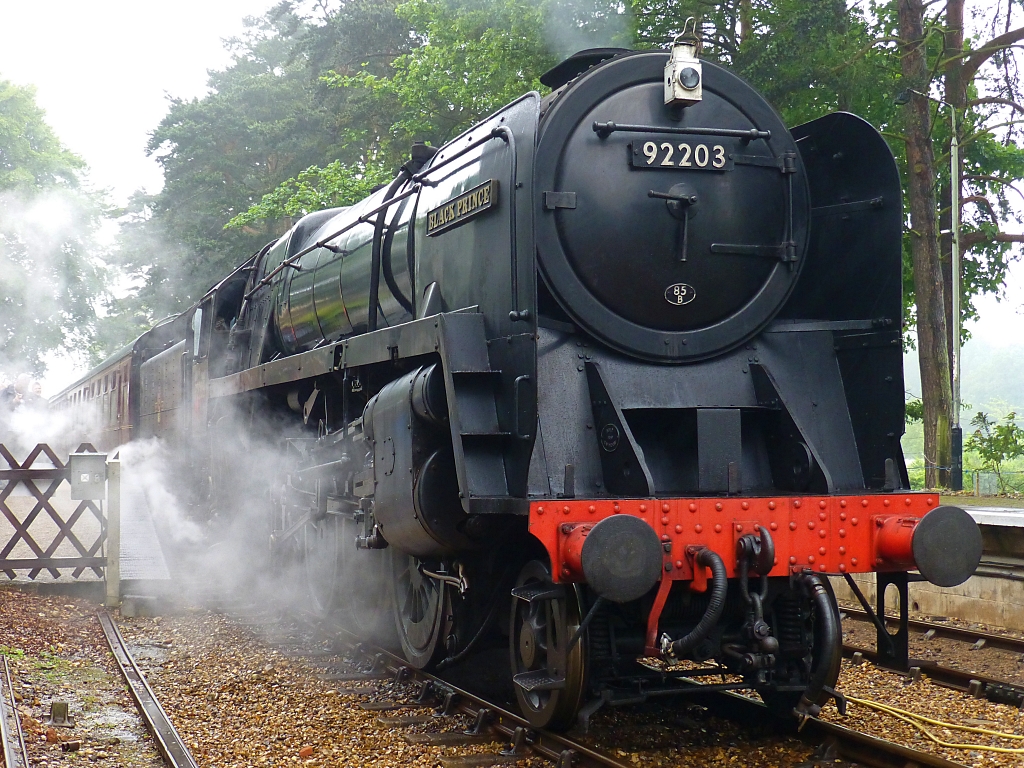 The Black Prince at Holt Station © essentially-england.com
The Black Prince at Holt Station © essentially-england.comAnd what a treat we were in for. The locomotive hauling our train was number 92203, the Black Prince. This powerful black steam engine holds the record for pulling the heaviest freight train in Britain in 1982 whilst it was at Foster Yeoman’s Tor Works!
The Black Prince is a Class 9F 2-10-0 engine built in the Swindon Works in 1959. It only worked until 1967 when it was retired. It was bought from British Rail by an artist who gave her the name Black Prince.
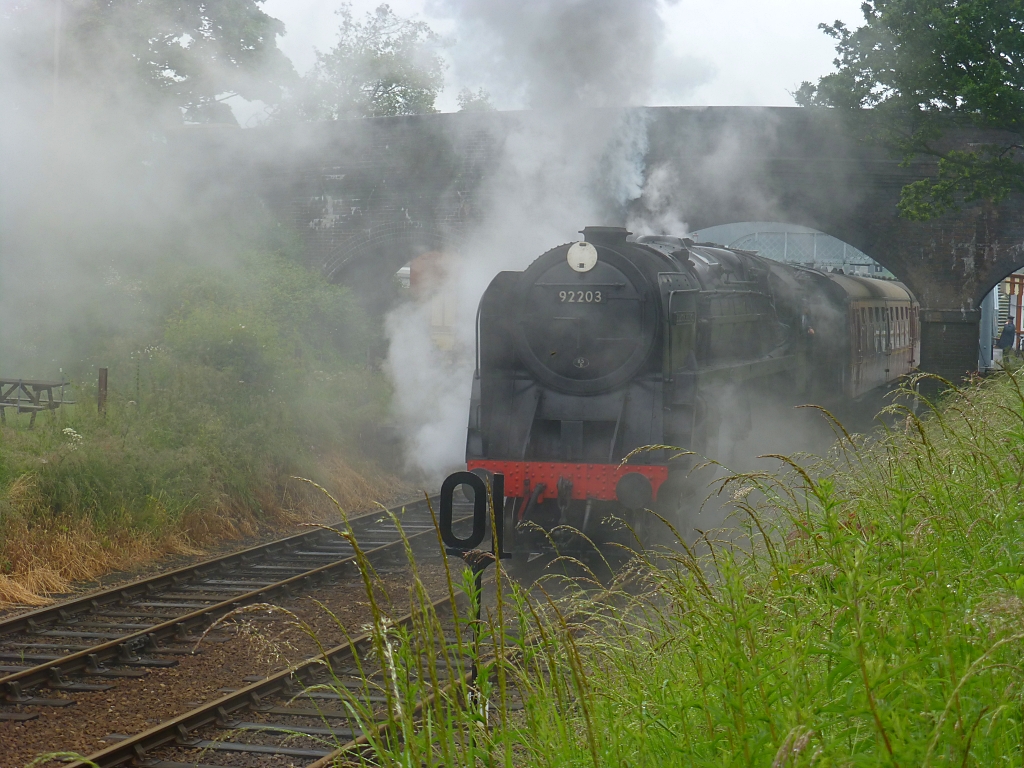 The Black Prince Pulling Away from Weybourne Station © essentially-england.com
The Black Prince Pulling Away from Weybourne Station © essentially-england.comWe bought day rover tickets which allowed us to travel all day on any train. I can’t remember our exact route, but we were going backwards and forwards waiting for a break in the weather when we wanted to be in Sheringham.
The other train running on the day was the Railbus E79960. British Rail trialled a series of railbuses in the late 1950’s, and this particular diesel vehicle was built by Waggon and Maschinebau in 1958. There was quite a difference when jumping from one train to the other!
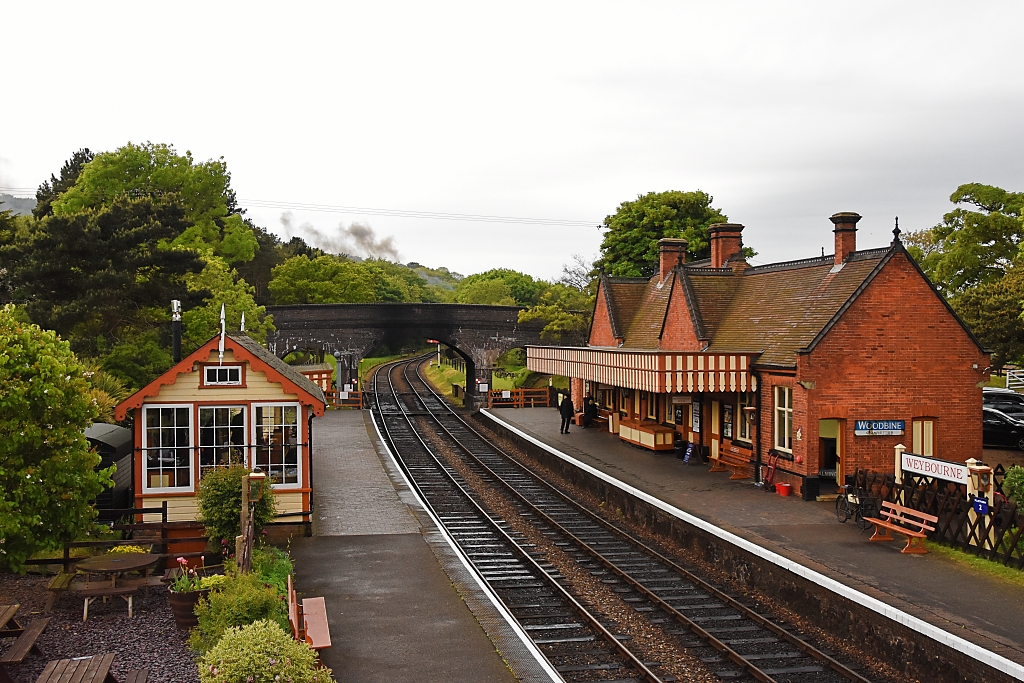 Weybourne Station from the Footbridge © essentially-england.com
Weybourne Station from the Footbridge © essentially-england.comThe first stop was Weybourne Station which has been fully restored and painted in the original M&GN brown and cream colours. At the height of the Poppyland tourist boom in the 1890’s, the railway company chose to make Weybourne a holiday resort and built the station to promote the now demolished Weybourne Springs Hotel which was constructed around the same time. The station was completed in 1900 and the first passenger train stopped here on the 1st of July 1901.
This beautiful station has lots of period features with a lovely booking hall and waiting rooms. It’s possible to look through the windows and watch the signalmen operating the levers in the on-platform signal box which was rescued from the original Holt Station. There is also a footbridge between the two platforms which allows great views of the surrounding countryside, and the local footpaths allow great close-up action of the trains and the large maintenance area.
A number of walks pass the station that could take you into Weybourne, down to the coast, or up into the beautiful Sheringham Park. We have done a lovely walk starting from Sheringham Park that visited Weybourne Station and the coast.
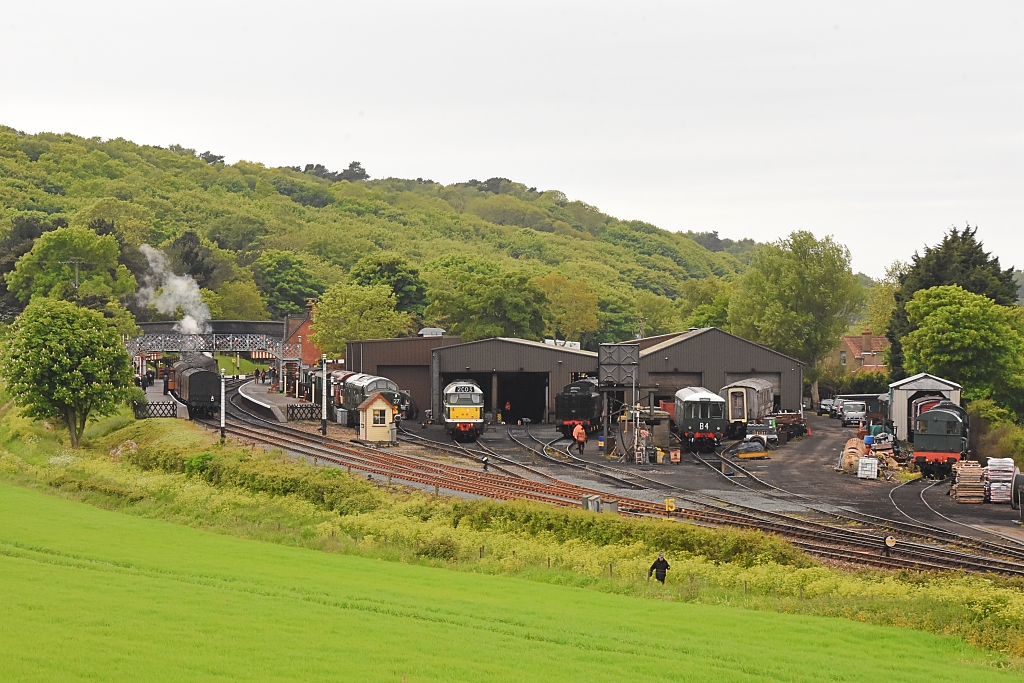 Weybourne Station and Workshop Area © essentially-england.com
Weybourne Station and Workshop Area © essentially-england.comSheringham Station was built in 1887 and was extended as the town grew. It is the main station and end of the North Norfolk Railway line. The station has been restored to how it looked in 1955 and re-opened in 1975. The detailing of the station buildings and glass canopy roof on platform one is stunning in their green and cream colour scheme.
From the station you can cross the road to Sheringham mainline railway station to continue to Cromer or even Norwich, watch the engine run around the coaches and return to Holt, or like us, you could explore Sheringham and its beach and cliffs.
Our hoped-for lunch time dry spell whilst in Sheringham didn’t quite hold and we ended up eating fish and chips overlooking the beach under what shelter we could find and an umbrella. It wasn’t ideal, but what we saw on this damp showery day inspired us to come back and spend more time in this charming seaside resort when the weather was better.
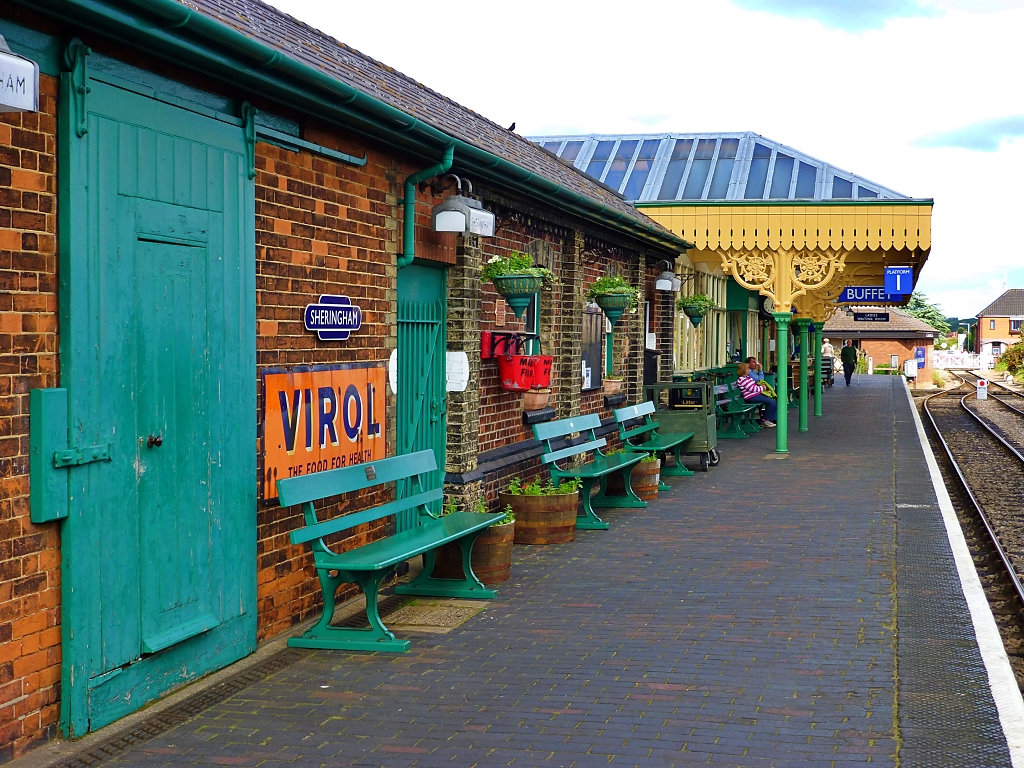 Platform One of Sheringham Train Station © essentially-england.com
Platform One of Sheringham Train Station © essentially-england.comBack at Sheringham Station, and a little damp around the edges, we climbed aboard the last steam hauled train of the day back to Holt. At the front end, steaming away, was the Black Prince waiting for the guard's whistle to give it the off. It was a lovely scenic journey and all over too quickly. What a thoroughly nice day!
For more information on the North Norfolk Railway, its time table, list of events, and history please go to their website here.
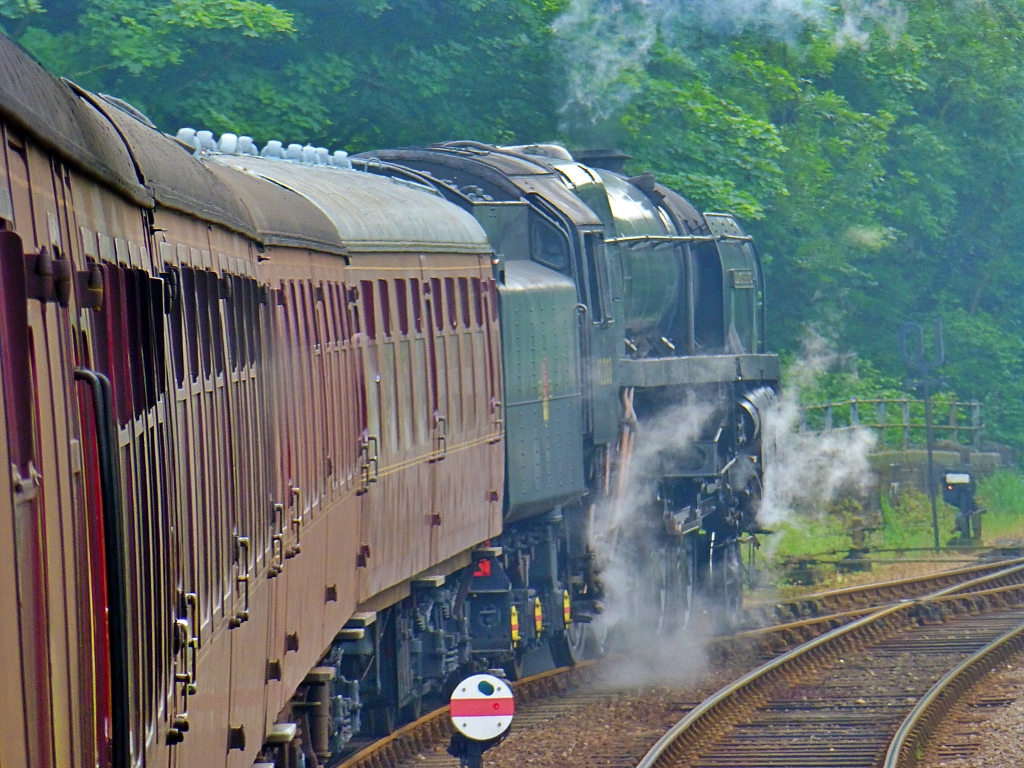 The Black Prince in Action Approaching Holt Station © essentially-england.com
The Black Prince in Action Approaching Holt Station © essentially-england.comAre You Planning a Holiday in Norfolk?
Where You Could Stay
Norfolk has no shortage of fabulous holiday accommodation whether you want to spend time on the beach, love boating or want to explore inland. You may covet a tiny fisherman's cottage like the one in Blakeney we kept returning to. You may like something larger and more modern like a loft overlooking the Norfolk Broads, or the right place for you may be a chic city apartment perfectly placed to explore Norwich...
To see other holiday cottages in Norfolk click here. Or check out holiday cottages in other parts of England by clicking here.
Or you could try a family orientated holiday resort in Lincolnshire as there's plenty of choice...
If you need to find a hotel, then try one of these search platforms...
What You Could See and Do
It's next to impossible to be bored in Norfolk, there's just so much to do and see. The list below includes some of our favourite places
- Explore Norwich with its shops and two cathedrals and pay a visit to Norwich Castle and its teapot museum.
- Visit Admiral Lord Nelson's birthplace at Burnham Thorpe and read the report of the Battle of Trafalgar in a copy of The Times from 1805
- Spend a day at Sandringham and Castle Rising Castle
- Take a ride on the Holt to Sheringham Railway and explore the beautiful little town of Holt and the seaside town of Sheringham
- Explore the ruins of Castle Acre and Castle Acre Priory
- Shop in Burnham Market
- Wander around the small town of Blakeney, explore the church and harbour before making an attempt to reach the seals at Blakeney Point
- Admire the famous windmill and go birdwatching in Cley-next-the-Sea
- Be wowed by the rhododendrons in Sheringham Park
- Visit Anne Boleyn's family home, Blickling Hall, or explore Oxburgh Hall, a fabulous manor house with a moat.
- Go wildlife spotting while walking through the Cley marshes from Blakeney
- Or even fish for crabs and wander along the famous pier at Cromer.
For more ideas try our Things to do in Norfolk page...


